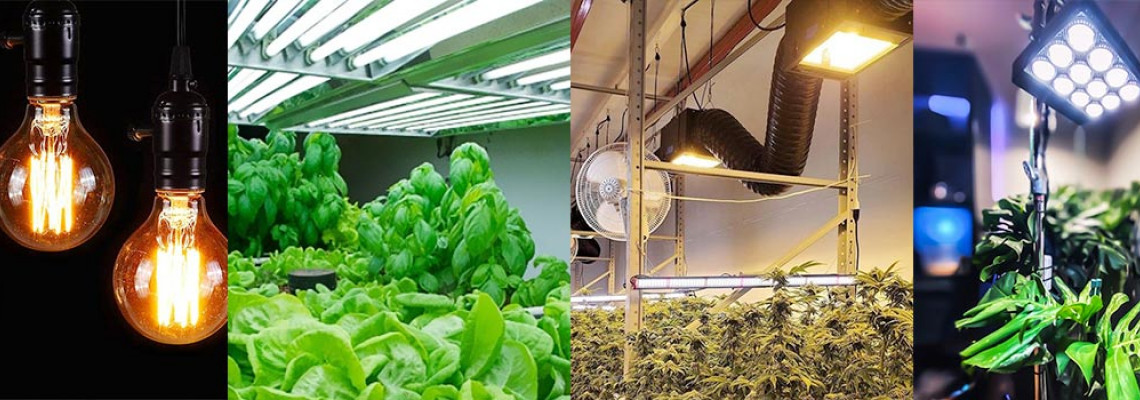
In today’s fast-changing agricultural landscape, selecting the right lighting system is vital for maximizing crop productivity—particularly in indoor farms and greenhouses. With technology advancing rapidly, growers are faced with a crucial decision: stick with traditional grow lights like High-Pressure Sodium (HPS) and fluorescent systems, or switch to modern LED lighting.
Traditional lighting methods have been trusted for decades and are known for their strong light output, especially in the red spectrum, which supports flowering. However, these systems come with drawbacks such as high energy consumption, heat output, and frequent maintenance.
On the other hand, LED grow lights have surged in popularity due to their energy efficiency, customizable spectrum control, low heat emission, and long lifespan. They allow precise adjustments in light wavelengths to suit each plant growth stage—from seedling to harvest—resulting in better quality crops and higher yields with less resource use.
In this blog, we’ll explore how LED lighting stacks up against traditional systems in terms of cost, efficiency, plant health, and sustainability. Whether you’re a commercial grower or a home gardener, understanding these differences will help you make a more informed decision for your crops in the modern age of farming.
Understanding the Basics
Traditional Grow Lights: These include High-Pressure Sodium (HPS), Metal Halide (MH), and fluorescent lights. HPS lights are known for their high intensity and are typically used during the flowering stage. Fluorescent lights, like T5s, are often used for seedlings and clones.
LED Grow Lights: Light-emitting Emitting Diodes (LEDs) are solid-state lighting systems that can emit specific wavelengths of light. Full-spectrum LEDs can mimic sunlight and be customized to support various stages of plant growth.
Energy Efficiency
Traditional Lights: HPS and MH lights are power-hungry, consuming significantly more electricity than LEDs. They also produce a lot of heat, which may require additional cooling systems.
LED Lights: LEDs consume up to 50-70% less energy and emit very little heat, reducing both power bills and the need for supplemental cooling. Over time, this leads to substantial savings, particularly for large-scale operations.
Light Spectrum and Customization
Traditional Lights: Most traditional lights offer a fixed spectrum, which may not be ideal for all plant stages. For instance, HPS lights skew toward the red spectrum, which is better for flowering but not for vegetative growth.
LED Lights: Modern LED systems allow growers to customize the light spectrum. This means they can adjust the balance of red, blue, UV, and far-red light to suit the needs of different crops at each growth stage.
Lifespan and Maintenance
Traditional Lights: These lights have shorter lifespans, usually around 10,000 to 20,000 hours. They require frequent replacement and maintenance, which adds to operational costs.
LED Lights: Quality LED grow lights can last over 50,000 hours. Their durability and low maintenance needs make them a smart long-term investment.
Heat Output and Plant Safety
Traditional Lights: They emit a considerable amount of radiant heat, which can cause heat stress or damage if placed too close to plants. Cooling systems are essential to manage temperatures.
LED Lights: With minimal heat emission, LEDs can be placed closer to crops without risking plant damage. This also allows for more compact and vertical growing setups.
Environmental Impact
Traditional Lights: Higher energy use and frequent bulb replacement contribute to greater environmental strain.
LED Lights: LEDs are more environmentally friendly due to their lower energy consumption, longer lifespan, and absence of toxic materials like mercury (found in some fluorescents).
Cost Considerations
Upfront Costs:
Traditional lights are generally cheaper to purchase initially.
LED systems have a higher upfront cost but offer greater returns over time.
Operational Costs:
Traditional lighting requires more power, bulb replacements, and cooling.
LEDs drastically cut down on electricity and maintenance costs.
Performance and Yield
Traditional Lights: These systems have been used for decades and have a proven track record of producing decent yields, particularly in flowering crops.
LED Lights: When optimized correctly, LEDs can match or exceed the yields of traditional lights. Their precise spectral tuning often leads to faster growth cycles and better-quality harvests.
Which Is Better?
While traditional grow lights have long been the backbone of controlled-environment agriculture, LED technology is proving to be more efficient, adaptable, and sustainable. For growers seeking long-term performance, energy savings, and improved crop quality, LEDs are the clear winner.
However, the best choice depends on your specific needs, budget, and scale. Small-scale or hobby growers might start with traditional systems due to lower upfront costs, while commercial operations can benefit immensely from investing in high-quality LED systems.
Conclusion
LED lighting has transformed modern farming by providing tailored, energy-efficient, and high-performing lighting solutions. While traditional grow lights still have a place, especially in legacy systems, the future is clearly leaning toward LEDs. For crop health, operational savings, and environmental sustainability, LEDs are not just better—they're the future.
Ready to make the switch? Consider your crop type, grow space, and long-term goals to choose the lighting system that will help your plants thrive.

Leave a Comment